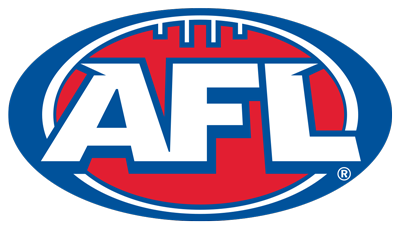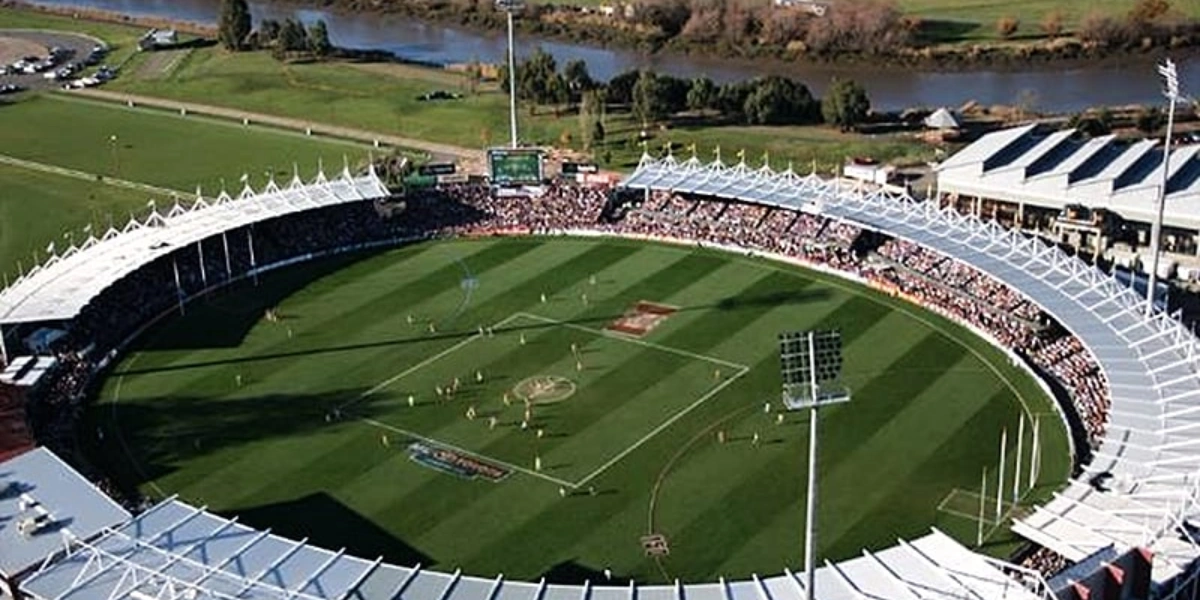York Park
Last updated on July 29, 2024 at 17:30 pm
Posted on July 27, 2024 at 17:40 pm
York Park’s historic transformation from a neglected swamp to a premier sporting and entertainment venue showcases its journey to become an iconic location. With a rich early history dating back to 1874, notable constructions in 2005, and ownership by the Launceston City Council and oversight by AFL Tasmania, the venue has evolved greatly. From hosting Australian Rules Football matches to major concerts and international sports events, York Park caters to a diverse range of needs. Discover more about its remarkable evolution and impact on the community.
Early history
In its nascent stages, York Park’s transformation from a swampy and neglected terrain to a revered landmark commenced with the strategic utilization of landfill, marking the initial steps towards its evolution into the esteemed Launceston showgrounds in 1874.
Originally characterized by swampy, sour conditions and overrun by weeds, the area underwent significant changes to become a central hub for recreation. By 1881, the Launceston City Council had taken over 47 acres for recreational purposes, laying the foundation for the park’s future development.
Renamed as York Park in 1901 to honor the Duke of York, the site officially opened in 1921, showcasing various sports facilities and setting the stage for its continued growth and significance in the community.
Construction
The construction of York Park involved significant financial investment, with a notable $23.6 million redevelopment in 2005.
This redevelopment had lasting impacts on the venue, including the construction of the Gunns Stand in 2000 and the addition of a roof above 6,000 terrace seats in 2003.
York Park was officially opened in 1921, marking the culmination of the construction process that transformed the area into a prominent sporting venue.
Cost
Construction expenses for the notable redevelopment of York Park in 2005 totaled a substantial $23.6 million. This significant investment underscored the commitment to modernizing the venue and enhancing its appeal for various events and sports activities.
To highlight the cost breakdown further:
Infrastructure Upgrades: The majority of the funds were allocated towards enhancing the stadium’s infrastructure, including the construction of new stands, facilities, and seating arrangements.
Technological Advancements: A portion of the budget was dedicated to incorporating state-of-the-art technology, such as sound systems, lighting, and video screens, to improve the overall spectator experience.
Sustainability Initiatives: A part of the expenses went towards implementing sustainable practices, like energy-efficient lighting and water conservation measures, aligning with contemporary environmental standards.
Impacts
Significant structural enhancements and modernization efforts at York Park have had a profound impact on the overall infrastructure and operational functionality of the venue. The $23.6 million redevelopment in 2005 saw the construction of the Gunns Stand, enhancing seating capacity and spectator experience.
Subsequent additions, such as the roof above 6,000 terrace seats in 2003 and the naming of gates after Tasmanian Premier Jim Bacon in 2006, further improved the venue’s aesthetics and accessibility. These construction efforts not only modernized York Park but also allowed for a more diverse range of events to be hosted, including major pop concerts and international sports competitions.
The ongoing plans to expand seating capacity and install retractable seating demonstrate a commitment to continuous improvement and adaptability in line with evolving demands.
Opening
Following the structural enhancements and modernization efforts at York Park, the successful completion of the $23.6 million redevelopment in 2005 marked a pivotal moment in the venue’s evolution, setting the stage for further improvements and developments.
The construction project aimed to enhance spectator experience and increase the venue’s functionality for various events.
Upgrades included the addition of the Gunns Stand in 2000 and a roof above 6,000 terrace seats in 2003, improving comfort for attendees.
Renaming the ground to Aurora Stadium in 2004 reflected a new era for the venue as it expanded its hosting capabilities beyond Australian rules football.
Development
The evolution of York Park from its humble beginnings as a swampy, weed-filled area to a renowned sporting venue with modern facilities showcases a remarkable journey of urban development and transformation. The landfill utilized to reclaim the land before its establishment as the Launceston showgrounds in 1874 marked the initial steps towards its development.
Subsequent acquisitions by the Launceston City Council for recreational purposes by 1881 paved the way for its growth. The significant renaming to York Park in 1901, in honor of the Duke of York, further solidified its identity.
Remarkable developments include the $23.6 million redevelopment in 2005, the construction of the Gunns Stand in 2000, and the addition of a roof above 6,000 terrace seats in 2003, all contributing to its modernization and expansion.
Ownership
Ownership of York Park is vested in the Launceston City Council, with operational responsibilities overseen by AFL Tasmania.
Key Points:
Council Ownership: Launceston City Council holds the ownership rights to York Park, overseeing its management and strategic development.
AFL Tasmania Oversight: AFL Tasmania plays a vital role in the day-to-day operations of the venue, ensuring its alignment with the broader goals of Australian rules football in the region.
Shared Responsibility: The collaborative ownership structure between the council and AFL Tasmania highlights a commitment to the ongoing success and sustainability of York Park as a premier sporting and events venue in the region.
Australian Rules Football
With a rich history of hosting Australian rules football matches since 2001, York Park stands as a distinguished venue for the sport, showcasing its significance in the region’s sporting landscape. The ground has been a prominent host for AFL matches, witnessing a record attendance of 20,971 in June 2006. It became the venue for AFL matches and Tasmanian State League games, solidifying its place in the Australian rules football community.
In addition to football, York Park has hosted major pop concerts, international sports events, soccer matches, and cricket games since 2001. The ground’s facilities, including the Gunns Stand and corporate box areas like the Gunns Function Centre, cater to the diverse needs of both players and spectators, further enhancing the Australian rules football experience at the stadium.

